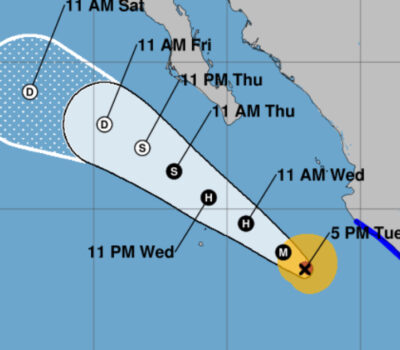It looked like a normal first day of school at Patria Libre elementary. Uniformed kids sporting brand-new backpacks with their favorite cartoon characters — Dora the Explorer, Hello Kitty, the “Frozen” heroines — reunited with classmates and sang the national anthem.
But that’s far from normal in Oaxaca, a Mexican state where teachers’ strikes and protests cost the average student 50 days out of the 200-day academic calendar last year, according to federal education officials.
Year after year, protesting teachers have blocked highways and cut off oil refineries. Residents of the capital have fled rocks and tear gas from clashes with police. And the city’s colonial plaza, one of the most picturesque in Mexico, is often filled with tent camps of demonstrators instead of tourists.
“Every year there has been a strike. … I’ve seen my kids falling behind, and we’ve had to support them at home so they can learn,” said Claudia Rodriguez Sosa, a 33-year-old mother of three students from pre- to high school.
Some parents say teachers threatened not to pass their children if they didn’t support the union, whose demands ranged from higher pay to the resignation of a former governor.
Now that seems to be changing as a national education reform pushed by President Enrique Pena Nieto takes root in the last strongholds of resistance by teachers’ unions.
The overhaul enacted last year was meant to wrest control over Mexico’s struggling schools away from unions who often determined hiring, firing and promotions. In many places teaching jobs were sold, or even inherited.
Officials say thousands of non-existent teachers were receiving paychecks and the government acknowledged it wasn’t even sure how many schools it was administering.
The main national union bowed to the reform — at least after its long-time leader, who had balked at the changes, was imprisoned on corruption charges.
But radical offshoots in Oaxaca and other states rebelled against the reform, and against its demand that teachers take exams to test their ability.
In late July, Oaxaca Gov. Gabino Cue finally bucked the powerful local branch known as Section 22 by taking away its dominance of the state’s education institute, where it had controlled 80 percent of the posts.
Some 300 union loyalists were fired from the institute, which is now run by government appointees under a round-the-clock police guard.
The institute now can dock salaries and even fire teachers who have more than three unexcused absences, crippling Section 22’s ability to stage sustained strikes.
“They can still protest, but only as long as it doesn’t disrupt the rule of law,” said the institute’s new director, Moises Robles.
“They will have to figure out how to march in the early mornings, on weekends, when they’re not on the clock.”
Authorities say almost all Oaxaca schools opened on time, with no major problems two weeks into the school year. But the union, which brought six months of chaos to Oaxaca City during protests in 2006, vows resistance will continue.
Union leaders say the real problems are a lack of resources for Oaxaca’s low-performing schools, and say the reform does nothing for rural hamlets where impoverished children attend wood-plank, tin-roof schoolhouses and often speak little or no Spanish.
Teachers acknowledge there were some abuses, but say the same occurred in other states.
“There’s corruption everywhere, but it’s not the Section’s fault,” third-grade teacher Anabel Aguilar Ibanez said.
They also say they alert parents before they go out on strike and try to make up for lost time.
But that can still mean families have to arrange childcare on stoppage days and send kids to school when they wouldn’t normally have to.
“The ones it hurts are the children, who don’t learn anything, and the parents, who don’t have time to be caring for us,” said Jonatan Contreras, a sixth-grader at Patria Libre, a collection of flat-roof classrooms clustered around a patio, whose library is a musty-smelling storage room with a jumble of worn textbooks and a leaky roof.
“But we do hold classes, no?” his teacher prompted.
“Uh-huh, we hold classes sometimes for a half-hour extra,” Contreras continued, “or if not, we extend the school year a little bit.”
About 75 domed tents still dot the plaza in a rotating protest camp outside Cue’s offices in the graceful, porticoed Government Palace. And Section 22 has urged supporters to oppose “this assault by the nefarious government.”
“If the intention is to fire 83,000 workers, well, go right ahead,” said Francisco Villalobos, the union’s No. 2 official. “And then there’s going to be a serious conflict, no?”
___
Peter Orsi on Twitter: www.twitter.com/Peter_Orsi
It looked like a normal first day of school at Patria Libre elementary. Uniformed kids sporting brand-new backpacks with their favorite cartoon characters — Dora . . .











